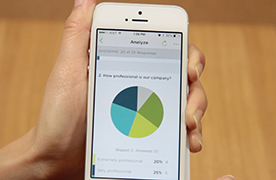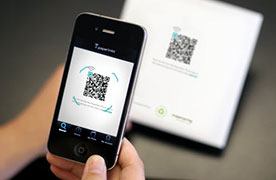
Any business actively developing and managing their marketing mix strategies faces common problems. From position to pricing to market expansion, we have solutions that help you make the best decision possible.

Our Social Media Listening programs provide brand owners to develop the lay of the online conversation landscape of their brand. By combining inputs from a host of tools, we can identify trends surrounding a client’s brand and key competitors, current brand sentiment, and key online channels of social conversation. By knowing what is being said and where it is being said, brand owners can develop initiatives to join the online conversation.
Increasingly brands have developed online communities through social media channels such as FaceBook or Twitter. These communities are an excellent resource for insights. We build programs that tap into these communities for various targeted research including online quantitative studies and even online qualitative studies.

We have successfully designed and implemented a number of research programs that size and segment a market place. A landscape research program will deliver clear insights into attitudinal and behavioral segments that define a product category as well as how key brand players compete within each segment.

Our brand positioning programs identify how key brands are currently positioned, key brand differentiators, key drivers of perceived differentiation, and brand positioning white space. These insights are crucial in developing a successful brand positioning strategy.
Our brand health tracking programs are multi-faceted. The programs comprise various research pieces designed to identify key business levers, create salient brand health performance indices, and measure client brand performance against key business levers benchmarked against a relevant competitive set.
Our brand compliance is driven by market-i Mystery Audits, which provide the ability to assess how well brand ambassadors such as front line staff, call center, and online staff deliver on customer service standards. Our online report delivery tools provide you with a highly granular look at brand compliance including location level, day-part, department, etc.
Brand owners face the increasing challenge of genuinely connecting with their consumers. Our Activ8 process means working with clients to create truly inspirational relationships with their consumers, built on strategies that seamlessly integrate traditional and experiential marketing. This requires exploring a brand’s consumers deeply, to understand their passions in terms of emotional needs, how they experience them, what they do to create the experience, etc. Once the brand-consumer passion landscape is understood, powerful activation programs emerge naturally, whether it is sport or event sponsorship, company-owned events and promotions, or interactive initiatives

Our campaign testing programs will assess how different campaign elements combine to deliver your intended message to your target audience. Our assessment will tell you which elements are having the greatest impact on message delivery and which are not. Our diagnostics will provide clear direction for improvement to ensure your campaign delivers the right message and call to action to the right target audience.
Our advertising concept testing programs help you clearly identify if your message is being clearly decoded by your target audience. Additionally, we will assess message salience and diagnose which ad design elements are contributing to or detracting from the intended message.
Our advertising concept testing programs help you clearly identify if your message is being clearly decoded by your target audience. Additionally, we will assess message salience and diagnose which ad design elements are contributing to or detracting from the intended message.

Our ideation research programs are designed to provide an in-depth category exploration, where we explore category usage, attitudes, and unmet needs. The outcome is an enumerated list of unmet needs that could be turned into product concepts. We typically work with our clients to develop a candidate list of concepts, including a concept description, a USP, tangible and emotional benefits.
Once we have several candidate concepts we can deploy either qualitative or conjoint research methods to identify a short list of product concepts that can be converted into prototypes. Our programs can either deliver a “winner” concept with some form of reach & frequency analysis or a series of top performing concepts for final consideration.
Once final candidate concepts are converted into prototypes, we utilize large-scale quantitative research to assess the reaction and trial intent amongst a relevant sample of the target audience. Our analysis assesses impact.

Our price sensitivity tools include both psychological price sensitivity which identifies price ranges where consumers perceive a price to be so low as to doubt quality or so high so as to be “not worth” the money. We also deploy brand cross elasticity measurement, which assess how changes in one brand’s price affect purchase behavior across competitive brands.

Our customer satisfaction programs are designed to identify key drivers of satisfaction, and measure brand performance benchmarked against key competitors. Our approach entails designing the customer touch-point model of your organization and then enumerating the relevant performance attributes for each customer touch point. Our analysis will prioritize key improvements by focusing those attributes that have the greatest impact driving customer satisfaction. Additionally, we create tracking barometers that can be delivered as continuously updated dashboards to key management via web based & smart device platforms.
Integral to our customer satisfaction measurement programs is net promoter score measurement. Our approach is based on Frederick Reichheld’s theories on customer advocacy as a primary driver to business growth. Furthermore, we bolt on a driver analysis component that clearly identifies drivers of “willingness to recommend”, and brand performance benchmarked to competition. Combined with customer satisfaction measurement, our NPS analysis empowers our clients to decisively drive business growth.

Increasingly brands must deliver across a number of stakeholder groups in addition to core target audiences. These include opinion leaders such as government, media, academia, employees, and general public. Ignoring anyone of these constituencies could have negative impact on a brand. Our Corporate Reputation measurement programs combine both an internal and external measurement of perceived corporate reputation. This approach allows us to identify areas of alignment and misalignment. Reputation areas of misalignment become key priority improvement areas.
Our employee engagement measurement programs segment employees into 4 distinct groups: Advocates, Potential Advocates, Job Trapped, and Defectionist. Our analysis provides a deep diagnostic in drivers of each group and what must be done to improve advocates. Furthermore, we assess Engagement disposition based on the theories of Timothy A. Judge whose empirical research concluded that job satisfaction is influenced by personal self-esteem, self-efficacy, need for control, and anxiety/neuroticism. The application of CSES to employee engagement research allows us to pragmatically assess satisfaction and engagement data with respect to employee disposition.
We deploy a wide array of research and analysis techniques to listen and understand your markets and customers. From traditional quantitative and qualitative research methods to advanced analytics, we are ready and equipped.

Our qualitative research team can design and implement a wide variety of qualitative research methods including focus groups, depth interviews, triads, etc. Whether they be held in a viewing facility, in-home, or in office we can handle it. Our moderator team comprises both male and female Arabic moderators as well as Asian moderators, meaning that we can easily handle any nationality. Additionally, all viewed projects, can be supported by simultaneous translation, transcription, and audio-video recording.
We offer a specialized qualitative method, which includes spending a day in the life of a target audience as they interact with a product category. Ethnography research is highly effective for identifying hidden behavior or attitudes a target audience may have with a product category or a brand, which is not easily articulated in a traditional qualitative research setting. We have successfully used Ethnographic research methods to support product development, communications, and brand positioning.

We can deploy a broad range of segmentation techniques to help clients identify unique customer segments that can be targeted or developed. These include psychographic, behavioral, and needs based segmentation. The specific segmenting technique will vary but can include Discriminant analysis, factor analysis, cluster analysis, conjoint based cluster analysis, and CHAID.
We can harness a broad range of statistical methods to assess the level of influence a broad range of attributes have on dependent variables or on each other. We utilize techniques such as linear regression, polynomial regression, structural equation modeling, and Hierarchical Bayesian analysis.
As an outcome of most of our large scale segmentation studies, we develop a Discriminant Function tool that can predict segment membership. Our DFA tools come in the form of a short questionnaire comprising 10-15 attributes that are used to predict which segment the interviewee belongs to. These tools can be embedded in a broad range of customer engagement programs and allow interactions with customers to be tailored to their segment profile.
We can deploy a broad range of segmentation techniques to help clients identify unique customer segments that can be targeted or developed. These include psychographic, behavioral, and needs based segmentation. The specific segmenting technique will vary but can include Discriminant analysis, factor analysis, cluster analysis, conjoint based cluster analysis, and CHAID.


Where large transactional databases exist, we can deploy a host of knowledge discovery tools to identify patterns amongst brand customers ranging from purchasing behavior, purchase baskets, purchase demographics, etc. These methods can be used to segment customers and identify upsell and cross-sell opportunities. Additionally, they can be used to anticipate patterns and trends.

Whether you are looking for a traditional nationally random intercept, central location intercept, or event intercept, we have the field management team to mobilize, organize, and manage large-scale quantitative research. What’s more, we have the requisite quality control procedures in place, to deliver great data.
We harness the power of online quantitative research through a variety of panel partners within the region and globally. Additionally, we use online research methods to survey brand communities resident in Facebook or Twitter.
For large-scale customer opinion surveys where accurate contact databases are available, we can develop, host, and run telephone surveys. We have the ability to conduct telephone surveys across the Middle East and our telephone interviewers speak Arabic, English, Hindi, Malayalam and Urdu. Should specialized languages be required we can extend our telephone language pool to Mandarin, Tagalog and a broad range of European languages.
We deploy a wide array of research and analysis techniques to listen and understand your markets and customers. From traditional quantitative and qualitative research methods to advanced analytics, we are ready and equipped.


Brand owners today who have embraced digital engagement are connected directly to large communities of brand users. We provide the survey platforms to leverage their digital brand communities as a source of quantitative measurement. Tapping digital brand communities as a source of quantitative measurement is not only fast, but extremely cost effective.


Brand owners today who have embraced digital engagement are connected directly to large communities of brand users. We provide the survey platforms to leverage their digital brand communities as a source of quantitative measurement. Tapping digital brand communities as a source of quantitative measurement is not only fast, but extremely cost effective.


Across the Middle East, research panels are growing rapidly in particular UAE, Saudi Arabia, and Egypt. Not only does market-i work with a key panel providers in the region, we utilize our own rewards based panel to conduct quantitative studies across the region.


The rapid proliferation of smart phones across the region means that respondents can use their smart device to participate in a survey. Most smart phones today come equipped with a QR code reader which means that respondents need only scan the QR code with their phone and the survey is automatically launched. The QR Code activated survey platform is particularly powerful for customer satisfaction research for retail, banking, and informal eating out.

Brands today must increasingly compete in a global space. To do so successfully, managers must understand their categories and brands in the context of different cultures. market-i has developed the network and expertise to handle projects across the globe.
Dubai Media City,
Al Thuraya Tower 1, #2404 - 2406,
P.O.Box 502695, Dubai, UAE